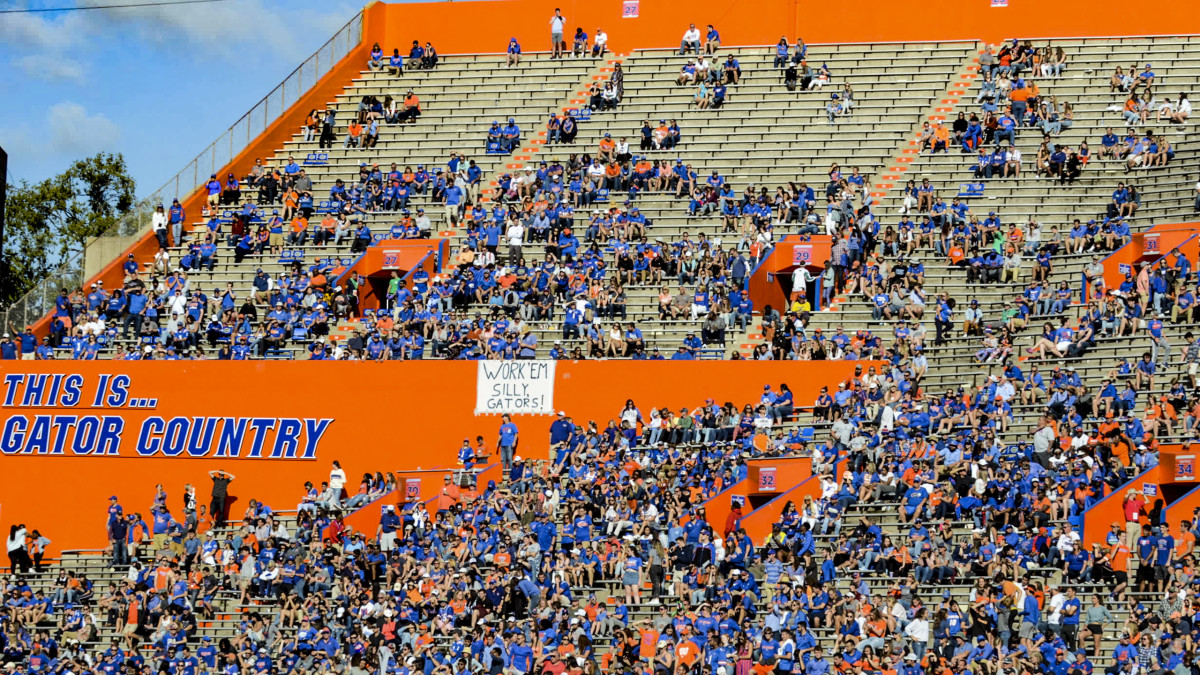Alienation and watching college football on TV

It’s apparently an excellent week to be publishing books on this very specific topic:
Reporting which preceded the Big Ten’s recent contract suggested that college administrators had themselves become uneasy with the amount of control that ESPN and Disney had over their sport. Whether this will ameliorate the quality degradation remains to be seen. Certainly none of the news releases about the deal that I have read mentioned anything about reducing the duration of commercial breaks.
Is this a silly thing to worry about? Yes and no. On the one hand, college football is not as materially crucial of an issue as, to take two examples, climate change and cancer. On the other, like all cultural narratives, highbrow and low, it has an intangible but foundational importance to the lives of those who use it to define their social communities and to explain their personal origins and values — to understand how life works, basically.
Karl Marx held that alienation is the condition people experience when they have no autonomy over something personally or socially meaningful to them because it is subject to the power and incentives of accumulated capital. I believe I embody the concept, as so defined by Marx, when I am watching five to eight consecutive commercials 16 times during a college football broadcast so that Disney shareholders and Rupert Murdoch might benefit.
That’s from Ben Mathis-Liley’s new book about how the experience of being a Michigan football fan can tell us a lot about the contemporary world.
This here below is from my new book about how the experience of being a Michigan football fan can tell us a lot about the contemporary world:
Another factor that is probably hurting attendance across the board is the startling increase in how long the games now last. For example, throughout the 1970s the average major league baseball game lasted two and a half hours: the same figure for 2021 was three hours and ten minutes. But this increase is modest in comparison to what has happened in college football. In 1973, as a thirteen-year-old boy, I went to every Michigan home game: those games averaged two hour and twenty-eight minutes in length. This past season, the shortest Michigan game was nearly a full hour longer, and games approaching four hours are now far from unusual.
A minor, though still annoying, factor driving this increase has been the ridiculous replay system employed by college football, which leads to often-pointless delays to review officiating decisions that wouldn’t be reviewed in a more rational system, such as that used in the NFL (College football can’t copy the NFL, however, as doing so might imply that this multi-billion-dollar enterprise isn’t a purely amateur endeavor).
But by far the most important factor in the lengthening of games has been the requirements of television, which provides an increasingly large share of the money that makes the whole thing go. It’s a striking fact that, back in 1973, games were broadcast in such a way that televised games — which were rare at the time — didn’t last any longer than those that weren’t televised. (The titanic clash that year between the undefeated and top-ranked Michigan and Ohio State teams was televised nationally, but ended up being three minutes shorter than the average Michigan game that same season).
In the early 1970s, a national college football broadcast would, as a matter of contractual obligation, include a total of eighteen minutes of commercials (this figure includes commercials during halftime). Natural breaks in the action, such as those after scoring plays, between quarters, and to tend to injured players, happened often enough that it was possible to televise a game without lengthening the time it took to play it, as amazing as that proposition may seem to fans today, especially those in the stands, who must endure interminable “TV time outs,” in order to feed the multi-billion-dollar beast that college football has become.
Today, the typical college football broadcast will include nearly a full hour of official commercial breaks – but the actual time spent on commercial interruptions is significantly longer, since this figure doesn’t include things like in-game promos and banner ads.
It’s hardly a surprise that younger fans, who have grown up in an Internet-saturated world in which attention spans are being constantly decreased by the economic imperatives of a clickbait culture, are increasingly resisting the idea of sitting in a possibly broiling or freezing stadium for nearly four hours. This is all the more likely to be the case given that these fans often having little or no access to the cyberworld which is their natural milieu: Internet connectivity is a perpetual problem at events where tens of thousands of people are gathered in a small space. Such factors make it more difficult to convince young fans in general, and college students in particular, that attending the Big Game in person represents a desirable investment of their scarce discretionary income.
As Mathis-Liley says, obviously this isn’t the biggest problem in the world; but it does throw light on more significant and widespread forms of alienation in what used to be referred to naively as “late capitalism.”


